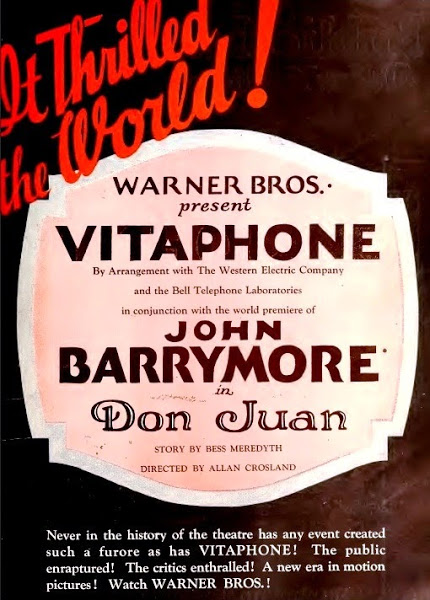One of the main reasons a silent film is often run at a more gooey speed is that a decision had been made that it should have “natural motion”. Usually a projection speed in the 18 fps neighborhood. Even without documentation or a time machine, there is an easy way to see if this was the way silent films were actually shown to audiences.
Just watch any of the films released in 1926 with a music and effects track. Or take a look at Chaplin’s City Lights. Or even The Jazz Singer.
The running speed for sound film was set somewhere in 1925-26 at a rate of 90 feet per minute or 24 frames per second. Both the Vitaphone and Movietone systems used this rate. Warner Brothers decided to hold back Don Juan from release so that it could be premiered with a recorded music and effects track, and on a program preceded by Vitaphone shorts of musical performances, classical music orchestral and solo works and opera, kicked off with the film of Will Hays announcing the Vitaphone.

I have a feeling the studios or board rooms or head offices were not abuzz with comments like — “You can’t release Don Juan like that! Everyone’s running around like the Keystone Kops! Barrymore will look ridiculous. People aren’t used to seeing pictures this way. Our first release with a Vitaphone soundtrack and score has to be shot entirely at 90 feet per minute.”
The first time I saw The Jazz Singer I remember being surprised that it (a) was actually a silent film except for Jolson’s musical numbers, complete with intertitles, and (b) had that same silent film speed-up I was used to.
That familiar speed-up is there in Murnau’s Sunrise (which F.W. really wanted to be shown at 100 feet a minute), and in The Better Ole, Lonesome, and Old San Francisco, and in the part-talkies of 1928-29.
Knowing full well that City Lights would be shown at 24 fps, Charlie Chaplin would otherwise have shot the entire film at 24 fps. Studio records list camera speeds for every take, and they are either 16 or 18 fps. There are a few shots that say “10-14 f.p.s.”, indicating Rollie Totheroh started the take at 14 and dropped down to 10 for a specific effect.
I’m not sure of the exact date the speed-up became the norm, but it was what audiences during most of the silent era were used to, and Warner Brothers wasn’t throwing America a major curve-ball in 1926 when they released Don Juan as their premiere of the Vitaphone.
“A Study in Undercranking”, the disc extra that I did for Criterion, is on the DVD and Blu-ray of their release of Chaplin’s The Kid.
Here’s a segment from Don Juan (1926):
Here’s the Will Hays introduction that opened the premiere program of Vitaphone shorts that preceded Don Juan (1926):